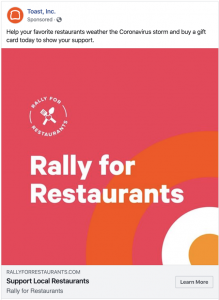An annual ritual that started in 1995, the valuable and insightful Mary Meeker Internet Trends Report was once again released this year on June 1st.
At Branch, we care deeply (pun intended) about mobile developers, marketers, founders, and anyone who works in the mobile landscape. So, we decided to sift through the 213 slide report and pick out all the nuggets of information that will be relevant to you. We’ve also embedded the entire report at the bottom of this post if you’d like to go through all of the slides.
Sit back, sip that coffee, and enjoy as we take you through a five minute summary of all that’s relevant to mobile.
Users
- 3 Billion+ Internet users growing at 9%. The growth rate has slightly declined in the last 4 years, but with the base becoming larger, growth rates are bound to slow down.
- India has 277 million internet users, making it the second largest market after China and bigger than United States in terms of user count. India grew internet users by 40% in 2015, adding more than 70 million users.
- There are more than 2.5 billion Smartphone users. The growth rate of smartphone users was 21% in 2015, but is slowing gradually. If we extrapolate growth of smartphone users and internet users, one can conclude that within 2 years, all internet users will have a smartphone.
- Asia-Pacific accounts for 52% of all smartphone users, while North America and Western Europe combined account for only 25% of smartphone users.
- The average user has 30 apps installed, spends 4–5 hours on mobile, and uses about 12 apps a day (more than 50,000 apps are launched every month). Also, 80% of time spent is captured by 3 apps. In the United States it is Facebook, Chrome, and YouTube; while globally its Facebook, WhatsApp, and Chrome. With Chrome in the top 3, it’s important to optimize interactions between the mobile app and mobile website.
Android vs iOS
- 1 billion+ Android phones and approximately 230 million iPhones were shipped in 2015. The growth rate is down to 10% and is expected to slide down to single digits in 2016.
- The average selling price of an Android phone is $ 200 while the iPhone is $ 650. This reflects in revenues per user, with iOS users spending 7X more, on average, than their Android counterparts.
- Despite Android having 4X more users than iOS, revenues in the iOS App Store exceed revenues of the Android Play Store by 1.75X. While the Play Store is responsible for 2X more app downloads than the App Store, an average iOS user downloads 2X more apps than an Android user.
- Android Smartphone prices are declining and will continue to do so. The average Android selling price has been reduced by 50% since 2008. In India, the average phone costs $ 150, which is 10% of the annual per capita income. In Ethiopia, a smartphone costs almost 50% of annual per capita income. iPhones prices have increased 10% since 2007 and cost 3X-4X more than the average Android phone. (Or approximately 6 to 18 months of wages in some countries.)
Xiaomi, the world’s 3rd largest private company and 2nd largest mobile phone manufacturer is a testament to this phenomenon — providing great phones at affordable costs.
For an app developer, this means a highly fragmented user base, spread across hundreds of devices and different OS versions. Additionally, if you are monetizing via in-app purchases, iOS users are 7X more valuable as compared to Android users.
The Mobile Advertising Industry
- The annual growth rate of the online advertising industry in the United States is in excess of 20%, with mobile advertising driving almost all of the growth.
- Mobile advertising holds a lot of promise with 25% of time spent on mobile, but mobile advertising accounting for only 12% of total ad-spend. It is worth noting that 3/4 of all ad revenue growth is captured by two companies: Google and Facebook.
The Impact of Commerce
- E-commerce (M-commerce included) is 10% of all retail sales in the United States. The growth rate is expected to increase as millennials become older and have more disposable income. This implies more commerce will be driven via mobile.
- Online shopping data is leading to new private labels by online sellers (e.g. Amazon launching Pinzon in home goods or Franklin Tailored in shoes). Data is allowing brands and online retailers to create highly tailored products and fine-tune algorithms to map users probability of purchase.
- Online retailers are not just launching data backed brands, but bringing retail to your doorstep. E.g. StitchFix , Le Tote, Trunk Club etc.
- Mobile is driving image based shopping and image commerce is rising. 55% of Pinterest users reported using Pinterest to find potential purchases. Offer-up, an image based local commerce app, rivals Snapchat and Instagram on time-spent/user. Offer-up is on path to $ 14 billion in GMV.
- Successful internet online retailers are reaching $ 100 million in sales less than 4 years after launch, 2x as fast as offline retailers.
M-commerce is highly lucrative and quickly creating new trends. Firstly, it is leveraging data to customize products and predict purchase patterns. Secondly, the combination of image based shopping and chat based commerce is driving purchase behavior. Thirdly, it brings retail to the consumer’s doorstep, helping millennials save their most valuable asset: time.
Social Media and Visual Content Are King
- Social video and images are the most dominant engagement tools on mobile and desktop, alike. In order of time spent: Facebook >Snapchat > Instagram > Tumblr, Pinterest, Twitter > Vine, LinkedIn
- The post millennial generation (born after 1995) prefers to communicate with images rather than text and toggles between more screens.
- Facebook owned apps dominate image sharing and account for two-thirds of the 3 billion+ photos shared daily. The biggest image sharing platforms are Snapchat and WhatsApp with 1B+ images shared daily.
- With increasing bandwidth, videos are the new drivers of time-spent. Snapchat is reporting 10B video views/day vs 8B video views by Facebook.
- Sponsored Snapchat filters are becoming increasingly popular and yielding 70M+ user views per month.
- Live social broadcasts of sports and other highly watched content on mobile is trending upwards in 2016. More viewers watched the MTV music awards on Snapchat than TV.
The Emergence of Voice
- Almost 20% of all searches in the United States are done via voice, and in China, the number stands at 10%. By 2020, 50%+ of all searches will be voice initiated. The 3 most used voice commands are: Navigate Home, Call Mom and Call Dad.
- Voice isn’t just used for input but output is desired as well. Baidu reported a 26X increase in API calls to it’s ‘text to speech’ API in the last 2 years.
- Amazon’s voice platform, Echo, sold more than 1 million units in Q1 2016 alone.
Voice commands is a paradigm shift creating a crevice for new businesses to creep in to dethrone incumbents. Think of the apps that can benefit from a 10X improvement in user experiences by using voice as an input/output medium.
Messengers Transform
- The biggest messenger apps are Whatsapp (1B+), Facebook Messenger (800M+) and WeChat (~700M). WeChat leads the way for businesses adopting messengers to drive customer loyalty and mobile commerce.
- Consumers can now book cabs, make/split payments, send gifts, interact with businesses, update social media, order online, and much more with messengers in China.
- Facebook Messenger and WhatsApp are adding features to make messengers the platform for all services and transactions. This will make them compete with the Google Play Store and Apple App Store on how users access services.
Beyond the Obvious
- The Chinese internet market reached 668 Million users (growing at 6%,). Chinese tech companies already form 7 out of top 20 tech companies in the world. 10 years ago this number was 0.
- Tech is mainstream now. Combined the top 20 tech firms are valued at over $ 2.7 trillion, have cash reserves of almost $ 450 billion, and revenues of more than $ 550 billion.
- Tech companies are growing faster than ever. Slack is growing revenues 2X as fast as Salesforce. Uber and Offer-up reached $ 10 billion in gross sales in record time and JD.com reached $ 50 billion GMV, five years sooner than Amazon.
- A lot of non-tech companies are now acquiring or investing in tech companies. $ 28 billion was spent by non-tech companies to acquire tech companies in 2015 alone.
- We have gone from 1 billion petabytes of data in the digital universe to almost 10 billion in 6 years. While data costs have come down from 20 cents per GB of storage to 5 cents per GB. We have seen big data breaches in the last 2–3 years, with the most recent one on LinkedIn, even affecting Mark Zuckerberg. More than 4 billion data records been breached since 2013. Users are taking data lot more seriously with 74% of users saying they might limit online activity if they have security concerns.
2016 Internet Trends Report from Kleiner Perkins Caufield & Byers
If there is one overriding theme for the Mary Meeker Internet Trends Report, it’s that mobile promises to be the first tool to connect all of mankind and democratize access to information and services. 2 billion users have been added to mobile internet in the last 5 years, and the next 5 years will likely see 2 billion more. We are in the infancy of mobile ecosystem and it’s time for all to care about their role in it.
Digital & Social Articles on Business 2 Community
(78)
Report Post


